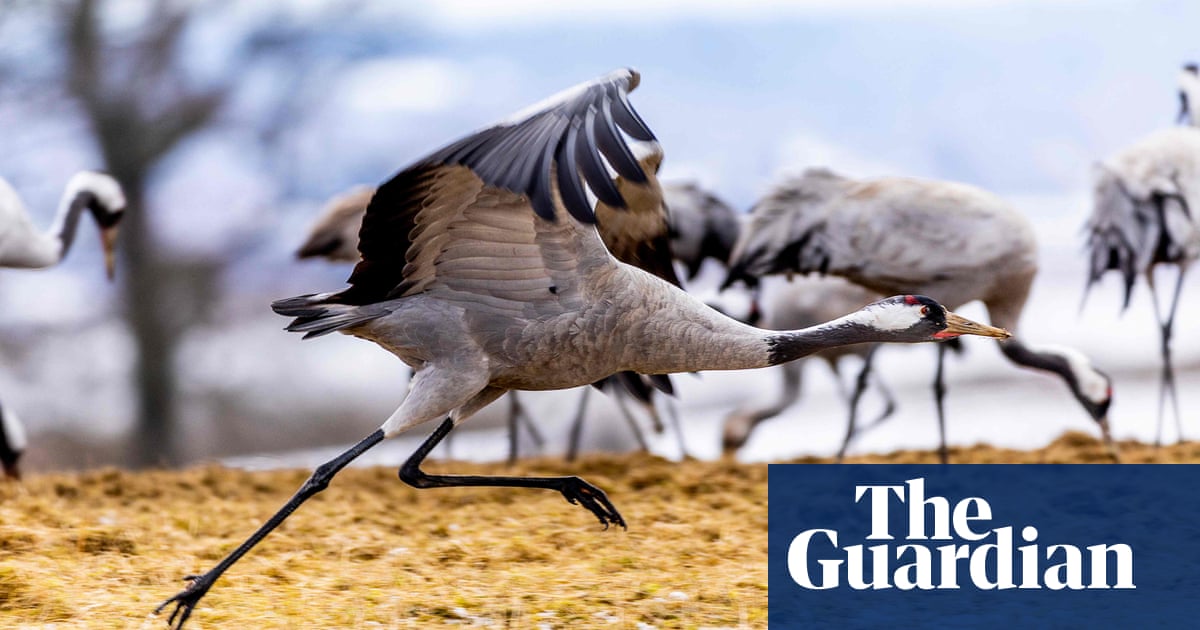- cross-posted to:
- [email protected]
- cross-posted to:
- [email protected]
Britain’s tallest bird, the spectacular, wetland-loving crane bred in higher numbers last summer than at any point since they disappeared from the UK in the 16th century.
At least 80 pairs of cranes were recorded in 2023, up from the previous high of 72 two years earlier. The birds, which make distinctive bugling calls but are surprisingly elusive in the breeding season, as they hide in reedbeds, successfully fledged at least 36 chicks.
The species, which performs elaborate mating dances each spring, first returned from Scandinavia to breed in east Norfolk in 1979. The population was kept secret for years and very slowly spread.
More recently it has been boosted by a reintroduction project where hand-reared cranes were released on expanded wetlands in the Somerset Levels.
This is the best summary I could come up with:
The birds, which make distinctive bugling calls but are surprisingly elusive in the breeding season, as they hide in reedbeds, successfully fledged at least 36 chicks.
Britain has drained, developed and destroyed more than 75% of its marshland but the recent restoration of some wetlands has helped the species recolonise Wales, Scotland and nature reserves across England, including in Lincolnshire.
We need to build on this foundation by safeguarding protected sites and creating larger, better-connected wetland areas across the UK to fully reap the benefits this vital habitat can provide for nature and people.”
Andrew Stanbury, an RSPB conservation scientist, welcomed recent government announcements to spend £16m on rewetting peatlands and its Landscape Recovery Fund second round, which supports net zero goals such as restoring marshland.
Cranes are difficult to spot when breeding but in winter Britain’s burgeoning population of 250 is often seen flocking and flying in groups to roost within reedbeds at dusk.
John Blackburn, the warden at Hickling, the Norfolk Wildlife Trust reserve close to where the birds first reestablished themselves, said: “In addition to cranes breeding on a number of our sites in the Norfolk Broads each year, nothing rivals the sight of dozens of these majestic birds coming in to roost at twilight – a real wildlife spectacle that visitors can enjoy at our Hickling Broad nature reserve each winter.”
The original article contains 389 words, the summary contains 225 words. Saved 42%. I’m a bot and I’m open source!



